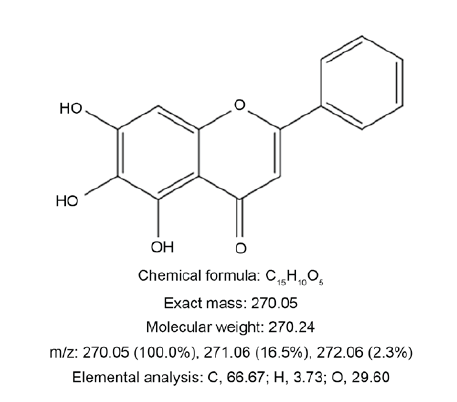Regulation of cytotoxicity and apoptosis‑associated pathways contributes to the enhancement of efficacy of cisplatin by baicalein adjuvant in human A549 lung cancer cells
Suparata Kiartivich#, Ying Wei#, Jiaqi Liu, Rungtip Soiampornkul, Mihui Li, Hongying Zhang and Jingcheng Dong*
ONCOLOGY LETTERS. 2017 Apr;13(4):2799-2804.
Scutellaria baicalensis (SB; Chinese name, huangqin) is widely used in Chinese medicine as a traditional adjuvant in the chemotherapy of lung and liver cancer. Baicalein is one of the bioactive flavonoid components isolated from the root of SB. The present study aimed to observe the effect of baicalein, in combination with platin-based systemic chemotherapy (cisplatin), oncytotoxicity and apoptosis of human A549 lung cancer cells. The cell cultures were treated with baicalein, cisplatin, or a combination of the two. Cell viability and cytotoxicity was assayed by XTT, and cell apoptosis was measured by flow cytometry. The apoptosis-associated proteins were detected by western blot analysis. The cytokines in the culture supernatant were detected by ELISA. The present study revealed that cisplatin and the baicalein-cisplatin combination inhibited viability and promoted cytotoxicity of A549 cells.Cisplatin, baicalein and baicalein-cisplatin combination treatments were effective in the promotion of apoptosis of A549 cells. Baicaleinand baicalein-cisplatin combination treatments also inhibited B cell lymphoma-2 (Bcl-2) and increased Bcl-2-associated X protein (Bax) expression. Additionally, cisplatin, baicalein and the baicalein-cisplatin combination promoted caspase-3 expression. Furthermore, thebaicalein-cisplatin combination suppressed the secretion of interleukin-6, and baicalein and the combination of baicalein cisplatindecreased the secretion of tumor necrosis factor-α of A549 cells. The present study concluded that baicalein combined with cisplatininduced cytotoxicity and apoptosis of A549 cells, and such activity may be associated with the regulation of Bcl-2, Bax and caspase-3, indicating a promising alternative method for lung cancer.



